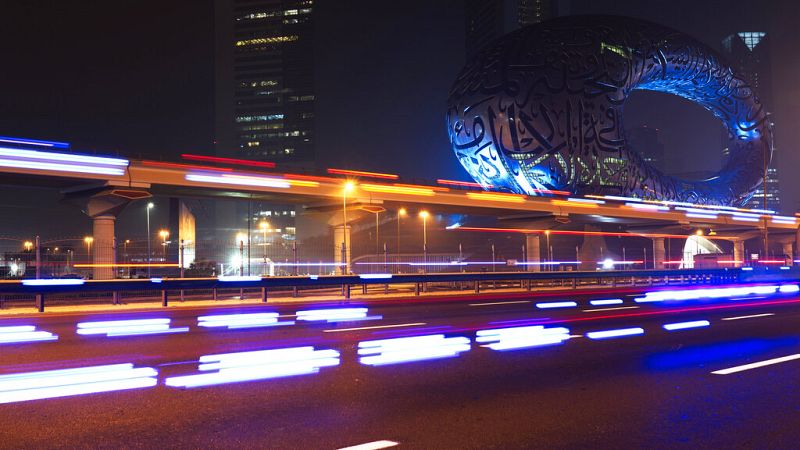Dubai Unveils Global First Icon System for AI Transparency in Human-Machine Collaboration

A New Era of Transparency in Human-Machine Collaboration
Dubai has introduced a groundbreaking initiative known as the Human-Machine Collaboration Icons, marking the first system globally that visually represents how humans and intelligent machines collaborate in research and content creation. This innovative approach aims to make the invisible visible, offering clarity on the roles each party plays in the creative process. The initiative is part of a broader vision led by His Highness Sheikh Hamdan bin Mohammed bin Rashid Al Maktoum, who emphasizes the importance of distinguishing between human creativity and artificial intelligence in an era of rapid technological advancement.
Sheikh Hamdan highlighted the growing challenge of differentiating between human and AI contributions, stating that this new classification system is designed to promote transparency and responsible use. He encouraged researchers, writers, publishers, designers, and content creators worldwide to adopt the system, ensuring it serves as a tool for mutual benefit. For Dubai, this initiative goes beyond policy—it reflects a global vision that values creativity, transparency, and trust in a world increasingly shaped by AI.
The Five Primary Icons and Their Significance
Developed by the Dubai Future Foundation, the system is composed of five primary icons that define the level of human and machine involvement: “All Human,” “Human Led,” “Machine Assisted,” “Machine Led,” and “All Machine.” These icons provide a clear visual representation of the collaboration dynamic. Additionally, nine functional icons offer deeper insights into specific stages of the creative process, such as ideation, data collection, design, writing, and translation. Together, these symbols act as honest signposts, helping readers, viewers, and decision-makers understand the balance between human and machine contributions.
This seemingly simple concept holds immense relevance in today’s digital landscape, where deepfakes and generative models have raised concerns about authenticity. By introducing these small but impactful symbols, Dubai aims to foster greater trust and transparency in AI-generated content.
Dubai's Ambitious Technological Vision
Dubai has long been known for its ambitious goals, constantly redefining itself as more than just a city of skyscrapers or an aviation hub. It now aspires to be the world’s next technological crossroads. The UAE’s AI market, valued at €29.7 billion in 2023, is projected to reach €234 million by 2030. Government-backed investments are fueling growth through data centers, chip fabrication, and sovereign computing. Strategic partnerships with tech giants like Microsoft, Nvidia, and OpenAI further solidify Dubai’s position as a leader in AI innovation.
According to Tarek Kabrit, CEO of Dubai-based tech firm Seez, AI represents a fundamental shift in how businesses, governments, and individuals interact with data, decisions, and automation. He emphasized that the true value of AI lies in its ability to integrate seamlessly into daily life, empowering people and creating human-centric experiences.
A Human-Centric Approach to AI Development
Dubai’s AI strategy is deeply rooted in a human-centric philosophy. Over a million residents are being trained in AI skills, while institutions like the Mohamed bin Zayed University of Artificial Intelligence attract global talent. The country’s AI Ethics Charter and data protection laws ensure that innovation is guided by ethical principles.
Sheikh Hamdan’s push for global adoption of the icon system aligns with this ethos, aiming to create a future where AI is not a mysterious black box but a transparent and trusted partner. This initiative echoes Dubai’s history of turning bold ideas into global benchmarks, from launching Emirates Airlines to sending the Hope Probe to Mars.
Now, the city is taking a similar approach with AI, blending engineering with emotion. The Human-Machine Collaboration Icons are more than just a framework—they represent a commitment to openness, trust, and inclusivity in the AI-driven future. As Dubai continues to lead the way, it reminds the world that progress must be driven not only by speed but also by transparency and shared responsibility.